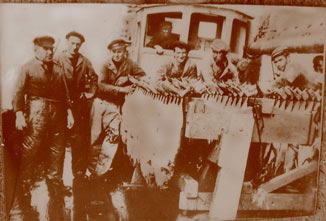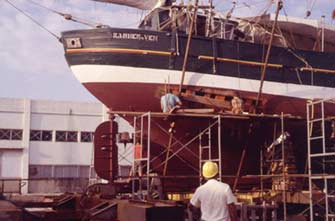1980 : It is then in the Balearics, that she is discovered
by a young English man. He falls in love with her, and with a bunch
of friends creates a nonprofit association to buy her. She becomes an
educational tool and traveling vessel for many people sharing their
love of traditional boats and education.
Karrek Ven sails for more then twenty years under the aegis of the association,
Jules Verne. First she sails sails back to her shores of origin, the
French Atlantic coast - Brittany, then England and Canary Islands.
1983 : Sailing in the Mediterranean, to Tunisia, Italy
to Greece, through the Aegean Sea to Crete. Historical research on piracy.
1984 : Sailing in Turkey, Marmara Sea, through the
Bosporus and into the Black Sea, Romania. The focus is on the Byzantines.
1985-1986 : Sailing in the eastern Mediterranean sea,
passage of the Suez Canal to the Red Sea. Study of ancient civilizations.
Underwater explorations.
1986 : Restoration of Karrek Ven in the small harbor
of Bozburun in Turkey: Rail, stanchions, upper stem and stern, upper
planking are all replaced.
1987-1990 : After an overhaul of
the rigging and the installation of a new set of sails in Spain, the
interior is rebuilt in the Canary Islands. Karrek Ven crosses the Atlantic
Ocean and sails in the Caribbean, from Venezuela to Guatemala, Belize
and Mexico. Underwater explorations, shore trips to Mayan ruins, many
Caribbean petroglyph sites, and diving with Humpback whales on Silver
Bank.
1990-1992 : Karrek Ven sails straight up the American coast
to New York City and docks for a week at the World Trade Center harbor.
The exploration of Cuba follows a more coastal route down the eastern
shore of the USA.
 History of Karrek Ven
History of Karrek Ven History of Karrek Ven
History of Karrek Ven
